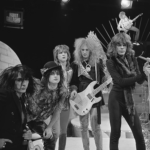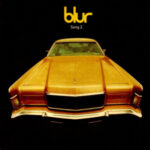 The New York Dolls stand as one of the most influential yet controversial bands in the history of rock music. Formed in the early 1970s, the Dolls fused the raw energy of proto-punk with the flamboyant, gender-bending aesthetics of glam rock, creating a sound and image that laid the groundwork for both the punk rock explosion of the late 1970s and the glam metal movement of the 1980s. Though their career was short-lived and they never achieved mainstream success during their initial run, the New York Dolls’ impact on the landscape of rock music is immeasurable.
The New York Dolls stand as one of the most influential yet controversial bands in the history of rock music. Formed in the early 1970s, the Dolls fused the raw energy of proto-punk with the flamboyant, gender-bending aesthetics of glam rock, creating a sound and image that laid the groundwork for both the punk rock explosion of the late 1970s and the glam metal movement of the 1980s. Though their career was short-lived and they never achieved mainstream success during their initial run, the New York Dolls’ impact on the landscape of rock music is immeasurable.
The Early Years: Formation and Influences
The New York Dolls’ story begins in 1971, when a group of young, rebellious musicians came together in the gritty Lower East Side of Manhattan. The band’s original lineup consisted of David Johansen on vocals, Johnny Thunders on guitar, Arthur “Killer” Kane on bass, Billy Murcia on drums, and Sylvain Sylvain on rhythm guitar. These musicians, many of whom had played in various garage and proto-punk bands around New York, shared a love for early rock ‘n’ roll, rhythm and blues, and British glam rock. Influences like The Rolling Stones, The Stooges, The Velvet Underground, and T. Rex informed their sound, while their image was a deliberate challenge to the conventions of masculinity and rock stardom.
At the time, the mainstream rock scene was dominated by bands like Led Zeppelin, The Who, and Pink Floyd—acts that epitomized the idea of the larger-than-life, hyper-masculine rock star. The Dolls, by contrast, adopted an androgynous, almost cartoonishly feminine image, performing in high heels, heavy makeup, and thrift-store dresses. This shocking aesthetic wasn’t just for show; it was a radical rejection of the norms of rock music at the time and a reflection of the Dolls’ commitment to self-expression and individualism.
Sylvain Sylvain and Johnny Thunders, who had known each other since childhood, were the driving creative forces behind the band’s initial formation. Their shared vision for a band that combined the raw energy of early rock ‘n’ roll with the attitude and style of glam rock set the foundation for what would become the New York Dolls. They quickly recruited David Johansen, whose brash, Jagger-esque vocals were the perfect complement to their ragged, high-octane sound, and Arthur Kane, whose aggressive bass playing gave the band its pulsing rhythm. Rounding out the group was Billy Murcia, whose drumming, though rudimentary, brought a wild, untamed energy to the band’s early shows.
The New York City Scene: Early Performances and Buzz
The New York Dolls made their debut in December 1971 at the Endicott Hotel, a small and dingy venue in Manhattan. The show, attended by a few dozen people, marked the beginning of the band’s notorious live performances. What they lacked in musical precision, they more than made up for in energy, attitude, and spectacle. Early shows were chaotic, loud, and often teetered on the edge of falling apart, but it was precisely this unpolished, raw quality that drew people in. The Dolls didn’t just play music—they embodied the anarchic spirit of rock ‘n’ roll in a way that few bands had before.
The New York Dolls quickly became a fixture in the burgeoning downtown New York scene, performing regularly at iconic venues like Max’s Kansas City and the Mercer Arts Center. These shows helped build the band’s reputation as one of the wildest, most exciting acts in the city, and soon they were drawing attention from both fans and critics alike. Despite their ragged musicianship and unconventional image, the Dolls began to build a dedicated following among the city’s bohemian, artsy crowd.
It wasn’t long before the New York Dolls caught the attention of the British music press, which at the time was more attuned to the emerging trends in glam rock than the American media. Writers from influential publications like Melody Maker and NME championed the Dolls as the next big thing, comparing them to British glam rockers like David Bowie and Roxy Music. This transatlantic buzz helped establish the Dolls as one of the most talked-about underground bands of the early 1970s.
Tragedy Strikes: The Death of Billy Murcia
As the New York Dolls’ reputation grew, so did their opportunities. In 1972, the band embarked on their first tour of the United Kingdom, where they were scheduled to perform at a series of club shows and meet with record executives. However, the tour was marred by tragedy when drummer Billy Murcia died of asphyxiation after a party in London. Murcia, who had passed out after consuming a mixture of drugs and alcohol, was reportedly drowned when well-meaning friends tried to revive him by forcing him to drink coffee and put him in a cold bath. The incident shocked the band and their fans, and Murcia’s death cast a pall over the band’s early success.
Despite this devastating loss, the New York Dolls soldiered on, determined to continue what they had started. Jerry Nolan, a seasoned drummer who had played with several other New York bands, was brought in to replace Murcia. Nolan’s drumming was tighter and more refined than Murcia’s, helping to tighten up the band’s sound while still retaining their wild, untamed energy.
The First Album: New York Dolls (1973)
With Jerry Nolan on board, the New York Dolls finally secured a record deal with Mercury Records and set to work on their debut album. Produced by Todd Rundgren, the self-titled New York Dolls was released in July 1973 and is now regarded as one of the greatest rock albums of all time. At the time, however, it was met with mixed reviews. Critics either loved or hated the Dolls, and there was little middle ground. The band’s ragged sound, abrasive lyrics, and flamboyant image were too much for some listeners, who dismissed them as a joke or a novelty act.
But for those who understood what the New York Dolls were doing, the album was nothing short of revolutionary. New York Dolls was a raw, visceral statement of intent, blending punk’s stripped-down, aggressive sound with the theatricality and style of glam rock. Songs like “Personality Crisis,” “Trash,” and “Jet Boy” became instant anthems for the burgeoning punk movement, while tracks like “Private World” and “Vietnamese Baby” hinted at the band’s ability to tackle more serious, socially conscious themes.
Johansen’s snarling vocals, Thunders’ searing guitar riffs, and the pounding rhythm section of Kane and Nolan created a sound that was both familiar and entirely new. Though the Dolls’ musicianship was often criticized as sloppy, their raw energy and attitude more than made up for any technical deficiencies. In many ways, New York Dolls was the blueprint for what would become punk rock: short, fast, and loud songs, performed with reckless abandon and a sense of rebellion against the status quo.
Despite its critical polarization, the album sold modestly well, and the Dolls began to build a reputation as one of the most exciting live bands in the country. Their shows were infamous for their wild energy, with Johansen’s swaggering stage presence and Thunders’ ferocious guitar work captivating audiences. However, while the Dolls’ live performances helped build their reputation, they were also a reflection of the band’s increasingly chaotic and self-destructive lifestyle.
The Downward Spiral: Drugs, Debauchery, and Decline
As the Dolls’ fame grew, so did their penchant for excess. Like many rock stars of the era, the members of the New York Dolls indulged heavily in drugs and alcohol, and this began to take a toll on the band’s cohesion. Johnny Thunders, in particular, became notorious for his heroin addiction, which would haunt him for the rest of his life. Arthur Kane also struggled with alcoholism, and the band’s constant partying and drug use often interfered with their ability to function as a cohesive unit.
Despite these personal issues, the New York Dolls managed to record a second album, Too Much Too Soon, released in 1974. Produced by George “Shadow” Morton, who was known for his work with The Shangri-Las, the album was a more polished effort than their debut, featuring more diverse instrumentation and a wider range of musical styles. Songs like “Babylon” and “Stranded in the Jungle” retained the Dolls’ raw energy, while tracks like “(There’s Gonna Be A) Showdown” showcased their ability to incorporate elements of R&B and pop into their sound.
However, despite its more refined production, Too Much Too Soon failed to achieve commercial success. The album sold poorly, and the band’s growing internal tensions and personal issues made it increasingly difficult for them to maintain their momentum. By the end of 1974, the Dolls were struggling to keep things together. Johnny Thunders and Jerry Nolan both left the band in 1975, effectively marking the end of the original New York Dolls.
Influence and Legacy: The Birth of Punk
Though the New York Dolls disbanded after just a few short years, their influence on the future of rock music was profound. While they never achieved commercial success during their initial run, the Dolls’ fusion of punk, glam, and early rock ‘n’ roll paved the way for the punk rock movement that would explode just a few years later. Bands like the Sex Pistols, The Ramones, and The Clash all cited the New York Dolls as a major influence, and the Dolls’ DIY ethos, androgynous image, and aggressive sound became key elements of the punk rock aesthetic.
Johnny Thunders, in particular, became a key figure in the punk scene, both for his work with the Dolls and his later solo career. After leaving the band, Thunders formed The Heartbreakers, another influential proto-punk group that helped bridge the gap between the Dolls’ glam-punk sound and the emerging punk scene of the mid-1970s. Though his career was marred by drug addiction and personal struggles, Thunders’ influence on punk rock cannot be overstated.
The New York Dolls’ impact wasn’t limited to punk rock, however. Their flamboyant image and theatrical stage presence also helped lay the groundwork for the glam metal movement of the 1980s, with bands like Mötley Crüe and Poison adopting the Dolls’ mix of outrageous fashion, raw energy, and hard rock attitude. The Dolls’ combination of high camp and streetwise rebellion became a template for many of the bands that would dominate the glam metal scene in the following decade.
The Reunion and Later Years
After decades of inactivity, the New York Dolls reunited in 2004 at the urging of musician Morrissey, a longtime fan of the band. This reunion was bittersweet, as Johnny Thunders and Jerry Nolan had both passed away, leaving David Johansen and Sylvain Sylvain as the only surviving members of the original lineup. Nevertheless, the band pressed on, recruiting new members and embarking on a series of successful tours.
In 2006, the reunited Dolls released One Day It Will Please Us to Remember Even This, their first album of new material in over 30 years. While the album didn’t recapture the wild energy of their early work, it was well-received by critics and helped introduce the band to a new generation of fans. The Dolls would go on to release two more albums, Cause I Sez So in 2009 and Dancing Backward in High Heels in 2011, before finally disbanding for good.
Sylvain Sylvain passed away in 2021, leaving David Johansen as the last surviving member of the original New York Dolls. Though the band’s time in the spotlight was brief, their influence on rock music continues to resonate. The Dolls were more than just a band—they were a movement, a challenge to the status quo, and a blueprint for the rebellion that would define punk rock and beyond.
Conclusion: A Lasting Legacy
The New York Dolls may have been misunderstood during their brief, turbulent career, but their lasting legacy is undeniable. They were visionaries who merged the primal energy of early rock ‘n’ roll with a glam rock aesthetic and punk attitude, creating a sound and image that would influence countless bands in the years to come. Their willingness to push boundaries, both musically and visually, helped shape the direction of punk rock, glam metal, and alternative music, making them one of the most important and influential bands in rock history.
This post has already been read 247 times!









